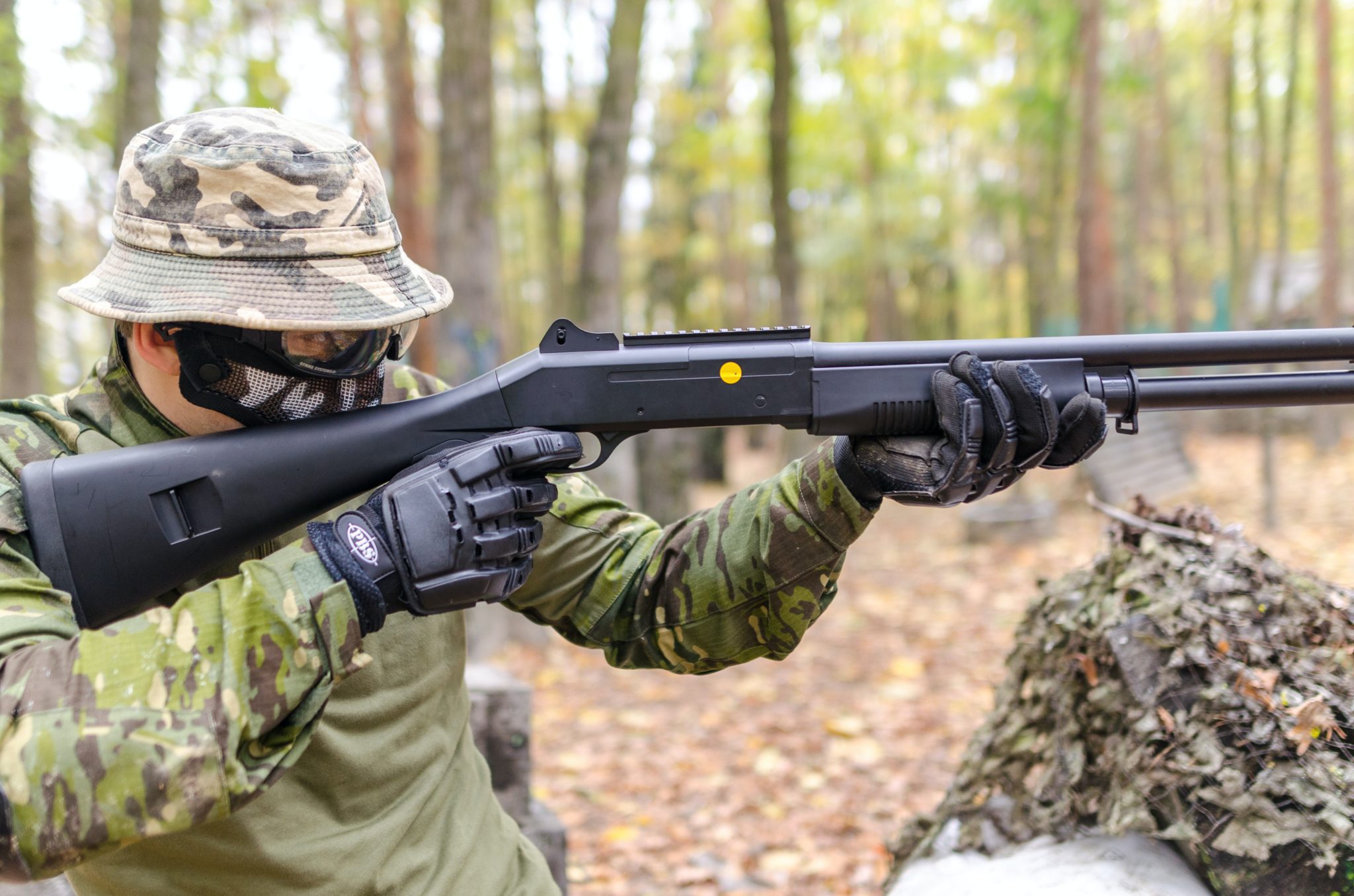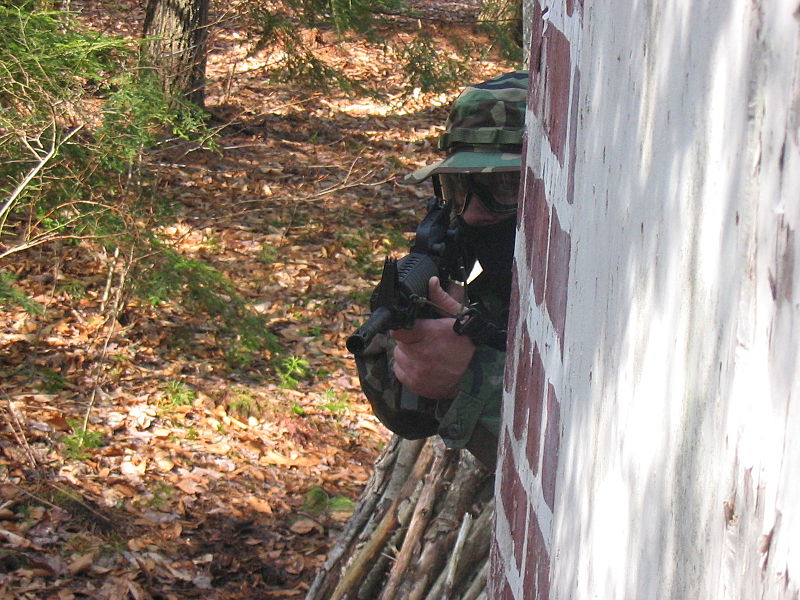Airsoft is a complete recreation of military combat in which participants use weapons that resemble real guns except that they use 6-millimeter hard plastic bullets instead of paintballs. It is a fantastic sport and hobby that is ideal for those looking for a fun activity that keeps them active and requires them to use their militaristic skills of combat and agility of the bodies. This is definitely an experience to put on your bucket list so whether you are into this sport or starting to get curious, it pays to know where and how did it come from?
Airsoft Origin
Airsoft began in Japan in the early 1970s, when photographer Ichiro Nagata, an avid shooting enthusiast himself, had the idea of creating model guns that fired real projectiles that could not kill. These “guns” were trademarked as soft air guns, catering to the needs of shooting enthusiasts while adhering to Japan’s strict gun control under the Firearm and Sword Possession Control Law.
The term “soft air” referred to the compressed Freon-silicone oil mixture used as a propellant gas and was later replaced by a propane-silicone oil mixture known as “Green Gas”, which was significantly weaker than the canister CO2 used in proper air guns, pellet guns, and BB guns. Because of their low muzzle energy, the plastic balls used in these “soft air guns” can be shot at humans without causing injury. Soft air guns became popular for casual wargames, which the Japanese refer to as survival games, due to their electric motor-gear box design, which allows for sustained rapid-fire using rechargeable batteries.
Airsoft guns were introduced to the United Kingdom in the late 1980s and early 1990s by a company called LS. They were sold in separate pieces and had to be assembled before they could be fired. These were then made available to the rest of Europe and North America, and they quickly became popular around the world. Airsoft has been adapted with a purely recreational application in mind since the mid-1980s, and the sport is enjoyed by people of all ages. Airsoft replicas are manufactured all over the world, with the majority produced in East Asia. It is now used for force-on-force training drills by many law enforcement agencies and military units in the United States.
Airsoft Mechanism and Features
You may be wondering what is an airsoft gun? Airsoft guns are typically classified as imitation firearms. They have a mechanism for firing projectiles with diameters of 6 mm or 8 mm. The operating principle of airsoft guns is classified as spring-loaded, electric-battery-powered Automatic Electric Guns, Airsoft Electric Guns or “AEGs”, or gas-powered if these have a blowback feature, they are known as “GBBs”. Some companies manufacture full replicas of counterpart grenade launchers that use a high-powered spring mechanism or a compressed gas propellant to fire a projectile spray of 6 millimeters (0.24 in) pellets examples are green gas, propane, compressed air, or CO2.
A type of airsoft gun is also available that is powered by a single (HPA) high-pressure air tank and a battery pack to power the internal FCU “Fire Control Unit” computer board. These types of guns are well-known for their high and adjustable “rate of fire” or (ROF) as well as their durability. These HPA replicas are commonly referred to as “PolarStars” even though this term refers to a popular brand of HPA engines and accessories.
Because of the use of aluminum alloy and plastic materials, an airsoft gun is noticeably lighter than its “real steel” counterpart. Some have added weights for a more realistic feel. Standard-capacity gas handgun magazines typically hold 10 to 30 pellets; however, some high-capacity magazines can hold 50 rounds or more. Magazines for AEG rifles are available in real capacity which is equivalent to the 30-round capacity of its real steel counterpart, low-capacity covers 10-50 rounds, mid-capacity with 75-160 rounds, and high-capacity with 190+ rounds. These magazines, like BB guns, have spring followers.
Airsoft Game
This game was developed in Japan in the 1970s. It entails players shooting each other with plastic projectiles or BBs rather than metal projectiles, which were originally used for target practice. The game is divided into two categories. The first category is known as military simulation (milsim). It involves players simulating real military scenarios. This version of the game is usually longer and more intense, and it is used for training purposes by soldiers and police. The second category is called speed soft, and it is a paintball-like game. It is less time-consuming and less intensive. This version of the game is suitable for all ages, including children.
This game is played in areas that simulate special forces operations, which usually involve close combat. You can, however, change it to suit your needs. The main point will be that it will simulate real-world military combat. To avoid injuries, you should also wear protective gear and completely cover your eyes. This is a requirement for anyone in the vicinity of the playing area, regardless of role.
Game Rules
All sports are governed by rules that all participants must follow. Those who do not follow the rules face penalties and punishments. Airsoft is a sport with its own set of rules and regulations. For example, if your opponent hits you, you are out. The same is true for your opponent. There are several variations of the game, including Domination, in which you must eliminate all your opponents, and capture the flag, in which you must capture a specific enemy target. Depending on your resources, you can modify the game to your liking.
Safety Precautions
Many manufacturers and retailers recommend always treating an airsoft gun as if it were a real gun. This will help alleviate safety concerns caused by an accidental/negligent discharge or prevent a public panic caused by an airsoft gun being mistaken for a real firearm. Most manufacturers include an orange tip on the muzzle of the airsoft gun for signaling and safety purposes, and most retailers advise customers not to remove the orange tip because it helps distinguish the airsoft gun from a real firearm. The orange tip serves several functions, one of which is to assist law enforcement in distinguishing airsoft guns from real firearms and thus preventing unnecessary excessive force.
Some fields require “barrel bags” also known as barrel socks, barrel condoms, barrel blockers, or barrel sleeves, to be worn over the muzzle of the gun when not actively playing. Typically, the magazine is removed as well, and the gun is fired to clear the chamber. Most fields also require players to leave their guns in the safety position when not shooting, which is a common practice when using real firearms. Certain countries, such as the Philippines, have enacted additional special rules.




